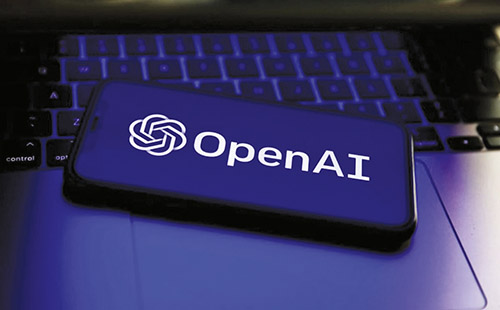OpenAI has initiated the roll-out of an advanced voice mode for selected ChatGPT Plus users. This new feature aims to enhance user interaction by enabling voice-based communication with the AI, offering a more natural and convenient way to engage with ChatGPT. The introduction of voice mode reflects OpenAI’s commitment to continually improving user experience and accessibility.

The advanced voice mode allows users to converse with ChatGPT using their natural speech, potentially making interactions quicker and more intuitive compared to typing. This update is expected to be particularly beneficial for users who prefer or require hands-free operation or those who find voice communication more comfortable.
As the roll-out progresses, OpenAI will likely gather feedback from users to refine the feature further before a broader release. This iterative approach ensures that the voice mode will be optimized for various use cases and user preferences
Contents
Key Features
- Natural Conversation:
- Users can speak directly to ChatGPT, making interactions feel more like conversing with a human. The AI processes and responds to spoken language, providing a smooth, conversational experience.
- Hands-Free Operation:
- Voice mode is particularly useful for users who need to multitask or prefer a hands-free approach. This feature can be beneficial in various settings, such as driving, cooking, or working on other tasks simultaneously.
- Accessibility:
- Voice mode can improve accessibility for users with disabilities that make typing difficult. This aligns with OpenAI’s mission to make AI technology more inclusive and user-friendly.
Potential Use Cases
- Personal Assistance:
- Users can leverage voice mode for tasks like setting reminders, checking weather updates, or asking for information without needing to type.
- Professional Use:
- In professional environments, voice mode can enhance productivity by allowing quick, hands-free queries and responses, useful during meetings or when typing is not feasible.
- Education and Learning:
- Voice interactions can aid in language learning, pronunciation practice, and interactive storytelling, providing an engaging educational tool.
- Customer Service:
- Businesses can integrate voice mode into their customer service platforms, offering more dynamic and efficient support interactions.
Future Enhancements
As OpenAI collects user feedback, several enhancements may be implemented:
- Improved Voice Recognition:
- Continuous improvements in voice recognition accuracy, accommodating diverse accents and speech patterns.
- Contextual Understanding:
- Enhancing the AI’s ability to understand and remember context over longer conversations, making interactions more coherent and meaningful.
- Multilingual Support:
- Expanding language support to allow users to converse in multiple languages, broadening the feature’s accessibility and utility.
Feedback and Iteration
OpenAI’s approach to rolling out the voice mode involves iterative development based on user feedback. This strategy ensures that the feature is fine-tuned to meet user needs and expectations. Users selected for early access are encouraged to provide detailed feedback on their experience, helping OpenAI identify areas for improvement and additional features that could enhance the voice mode.
Conclusion
The introduction of advanced voice mode for ChatGPT Plus users is a promising development in AI communication technology. By enabling natural, hands-free conversations, OpenAI is paving the way for more intuitive and accessible AI interactions. As the feature evolves through user feedback and continuous improvements, it has the potential to significantly enhance the way people interact with AI in both personal and professional settings.
